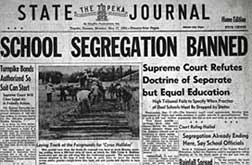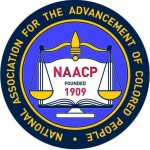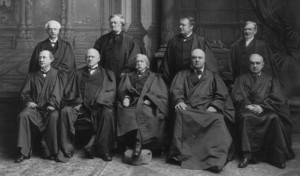Montgomery Bus Boycott 1955-1956
please install flash
The Road to Desegregation
1896 – 1956
“separate but equal”
Plessy v. Ferguson
(1896)
Background:
Ever since the US Supreme Court had ruled in 1896 (Plessy v. Ferguson) that separate (segregated) public facilities were constitutional as long as they were of the same standard, the African-American representative group – NAACP – had been attempting to challenge the constitutionality of segregation. The confirmation that racial segregation was not in breach of the US Constitution allowed many US States to enshrine Jim Crow Laws in their states.
Jim Crow Laws (1876 – 1965)
- Racial segregation laws
- Aimed largely at the African-American community, but also poorer whites, particularly in southern US states
- Restricted voting rights of African-Americans
- Stipulated that there had to be racial segregation in schools, restaurants, cinemas, transport & all public facilities
- Although ‘equal’ segregated facilities were supposed to be provided for non-whites, in reality, most African-American facilities were poorly-funded, sub-standard or simply subservient in nature to facilities for whites (see: transport code)
- Overturned by Brown v. Board of Education, Topeka
 “separate educational facilities are inherently unequal.”
“separate educational facilities are inherently unequal.”
Linda Brown v. Board of Education (Topeka)
(1954)
The case taken by the NAACP in 1954, on behalf of African-American student, Linda Brown, succeeded in challenging the constitutionality of “separate, but equal”. It stated that any segregation, by definition, involves inequality and was therefore, unconstitutional. The case was taken by the Topeka branch of the NAACP on behalf of 13 parents and their 20 children who attempted to enrol in their nearest school, only to be refused and instructed to enrol in segregated schools, which were much further away.
 National Association for the Advancement of Coloured People
National Association for the Advancement of Coloured People
(NAACP)
- Founded in 1909
- Founded after the Springfield lynching incident of 1908
- There were 53 White & 7 African-American founding members
- Stated aim to secure full & equal rights for all American citizens, particularly focusing on the 13th, 14th & 15th Amendments of the US Constitution
Timeline of Montgomery Bus Boycott
1955
After two similar previous arrests in the same year for violation of bus segregation laws, Rosa Parks is arrested for refusing to give up her seat to a white passenger. She is charged with “disorderly conduct”.
- 2nd December: black leaders & ministers meet at Dexter Avenue Baptist Church, forming the Montgomery Improvement Association.
- 5th December: Over 90 per cent of African-American population boycott the city buses on a one-day boycott.
- 13th December: MIA car-pool system goes into operation.
- 16th December: A committee are up of whites & African-Americans is formed by the Mayor of Montgomery to look at finding a compromise. The committee remains deadlocked when they meet three days later.
1956

